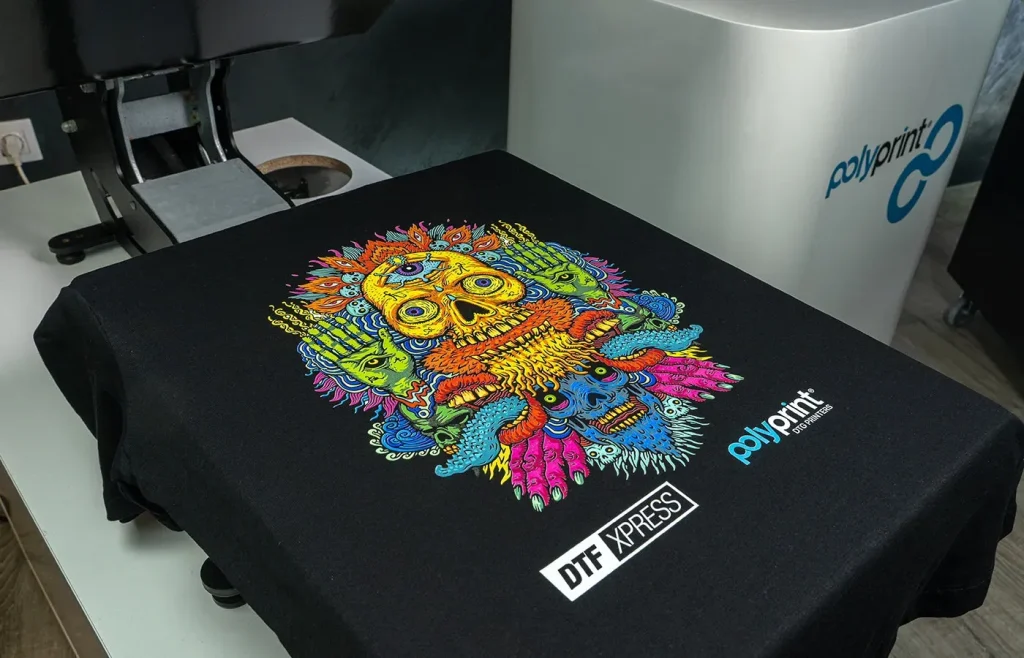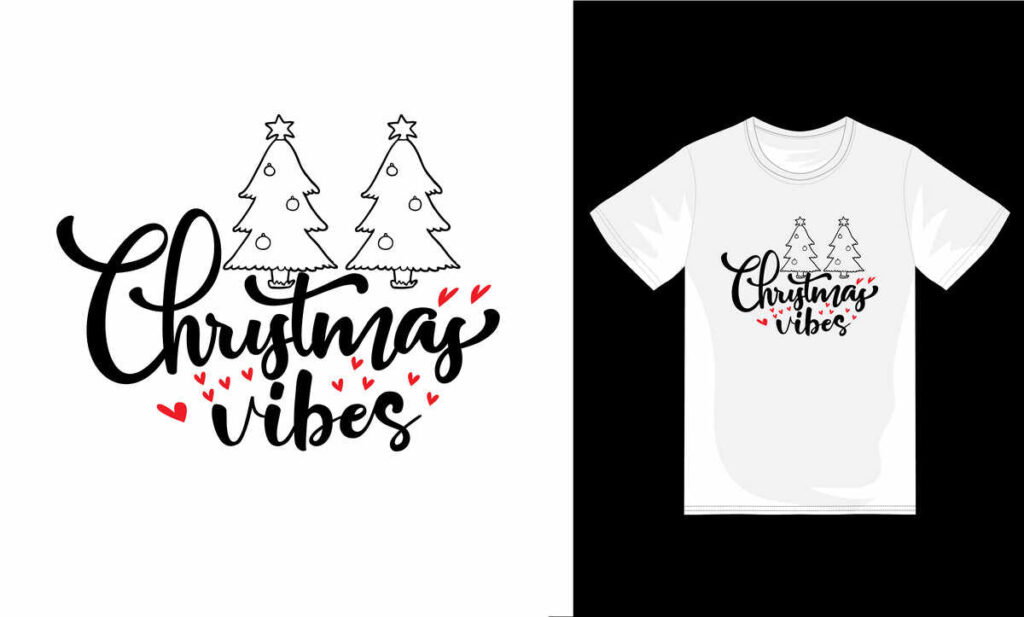DTF printing, or Direct to Film printing, is revolutionizing the way customized products are created within the printing industry. This cutting-edge technology offers an array of benefits, including the ability to print vibrant designs directly onto a film, which can then be transferred seamlessly onto various fabrics. As the demand for unique and personalized items continues to rise, businesses are swiftly adapting their printing technology to incorporate DTF techniques that cater to this trend. In this article, we will delve into the significant advantages of DTF printing, explore its growing popularity among e-commerce platforms, and examine how sustainable printing practices are being integrated into the process. Join us as we unlock the potential of DTF printing and its future in the dynamic world of custom printing.
Direct to Film printing, commonly referred to as DTF, is making waves as an innovative method in the realm of personalized merchandise and textile printing. This modern printing adaptation allows for stunning, full-color designs to be produced quickly and economically, meeting the varied demands of today’s consumers. As traditional printing methods face limitations, businesses are discovering the extensive advantages and possibilities that DTF brings to custom apparel and product offerings. Researchers and manufacturers alike are increasingly focusing on sustainable printing practices to enhance the appeal of DTF technology, reflecting consumer trends towards eco-friendly solutions. The rise of DTF printing not only exemplifies the evolution of printing technology but also highlights a substantial shift towards customization and individual expression in the marketplace.
Understanding DTF Printing Technology
DTF printing, or Direct to Film printing, represents a significant advancement in the field of custom printing technology. This method allows for intricate designs to be printed onto a special film, which can then be easily transferred onto textiles such as shirts and bags. Unlike traditional screen printing that relies on layering inks in a specific order, DTF offers a more versatile approach, enabling the printing of multi-colored designs without the need for complicated setups. This innovation caters to the growing demand for customized products, allowing businesses to provide unique solutions without the hefty setup costs associated with traditional methods.
Moreover, DTF printing extends beyond mere aesthetic appeal; it also enhances functionality in custom printing. The adhesion process utilized in DTF ensures that designs bond well with different fabric types, providing durability that withstands repeated washes. This adaptability is particularly beneficial for small businesses looking to diversify their product offerings with minimal investment, thereby tapping into niche markets that demand personalized and high-quality merchandise.
Benefits of Adopting DTF Printing
One of the foremost advantages of DTF printing is its cost-effectiveness, making it accessible for businesses of all sizes, especially startups and small enterprises. This technology minimizes waste by allowing on-demand printing, where products are only created as orders come in. Consequently, companies no longer face the dilemma of overstocking and underutilizing their resources, unlike traditional printing methods that often require bulk production to offset setup costs.
In addition to financial benefits, DTF printing offers exceptional print quality. The vibrant colors produced through this method remain vivid even after multiple washes, making it an attractive option for custom apparel. This durability not only enhances customer satisfaction but also promotes brand loyalty, as consumers increasingly seek high-quality products that stand the test of time.
Market Trends Influencing DTF Printing
The DTF printing market has seen rapid expansion, driven largely by e-commerce’s explosive growth. Businesses are increasingly leveraging DTF technology to meet consumer demands for quick and customizable products. The ability to produce items swiftly and efficiently aligns perfectly with the modern consumer’s expectation for instant gratification, thus positioning DTF printing as a critical technology in the custom printing landscape.
Moreover, the integration of advanced technology in DTF printing has revolutionized the production process. Continuous improvements in printing equipment and the development of high-quality inks have significantly boosted the efficiency of DTF printing systems. As manufacturers commit to innovation, these enhancements not only improve the user experience but also help companies differentiate themselves in a saturated market.
Sustainable Practices in DTF Printing
As the world moves toward more sustainable practices, the DTF printing industry is not lagging behind. Numerous companies are exploring eco-friendly inks and sustainable materials to minimize their environmental footprint. The shift towards sustainability in DTF printing resonates strongly with eco-conscious consumers, creating opportunities for businesses to attract a broader audience and forge deeper connections with their customer base.
Incorporating sustainable practices not only positions a brand as environmentally responsible but also improves operational efficiencies. By utilizing water-based, non-toxic materials in DTF printing, companies can reduce waste and lower their overall impact on the environment. This commitment to sustainability could be a deciding factor for consumers choosing between brands, making it a crucial element for businesses aiming to thrive in today’s market.
The Future of Custom Printing with DTF
Looking ahead, the future of custom printing will undoubtedly be shaped by advancements in DTF technology. As innovations emerge, such as improved printing substrates and integration with digital technologies, DTF printing is set to become more versatile and efficient, allowing businesses to cater to even more varied consumer needs. With potential integrations of AI and machine learning, companies may even be able to offer hyper-personalized products that adapt to customer preferences in real-time.
Additionally, as consumer trends continue to favor personalized and unique products, DTF printing will likely play a central role in satisfying this demand. Businesses that embrace these upcoming technologies and adapt their strategies accordingly will not only foster growth but also establish themselves as leaders in the evolving landscape of custom printing, ensuring they remain relevant to their target audiences.
Transforming the Custom Merchandise Landscape with DTF
DTF printing is on the verge of revolutionizing the custom merchandise sector, thanks to its incredible versatility and ability to cater to a wide array of products. From fashion apparel to promotional items, DTF provides businesses with the capability to produce high-quality, customized goods that stand out in the crowded marketplace. As more businesses recognize the potential to create shifting trends with unique designs, DTF technology will become a fundamental tool for brand differentiation.
Moreover, the shift towards personalized experiences in retail is heavily influencing consumer purchasing decisions. With DTF printing, businesses can rapidly prototype and produce unique products, which not only enhances customer engagement but also fosters a sense of brand loyalty. The ability to offer immediate customization options can lead to greater customer satisfaction, ultimately stimulating sales and elevating the overall consumer experience.
Frequently Asked Questions
What is DTF printing and how does it differ from traditional custom printing methods?
DTF printing, or Direct to Film printing, is a modern technique that prints vibrant designs onto a specially coated film, which is then transferred to fabrics using heat and pressure. Unlike traditional methods such as screen printing, DTF allows for versatile color selections without being limited to predetermined palettes, making it an ideal choice for custom printing.
What are the primary benefits of using DTF printing for custom merchandise?
The benefits of DTF printing include its versatility to print on various fabric types, cost-effectiveness with lower startup costs compared to traditional printing, high durability of prints that resist fading and cracking, and faster production turnaround times, which enhance customer satisfaction in custom merchandise.
How does DTF printing contribute to sustainable printing practices?
DTF printing can integrate sustainable printing practices through the use of eco-friendly inks and materials that minimize environmental impact. As the demand for sustainability rises among consumers, companies utilizing DTF technology are positioned to attract eco-conscious customers while contributing positively to the industry.
What trends are currently shaping the DTF printing market?
Current trends in the DTF printing market include an increase in e-commerce demand for personalized products, advancements in printing technologies that enhance quality and efficiency, a focus on sustainability, and the growing adoption of DTF printing by small businesses, all contributing to its rapid growth and market presence.
Why is DTF printing considered a revolutionary technology in the custom printing industry?
DTF printing is regarded as revolutionary due to its ability to meet the rising demand for unique and personalized products quickly and cost-effectively. Its adaptation in printing technology allows for intricate designs with greater flexibility and higher durability compared to traditional methods, setting a new standard in custom printing.
What does the future hold for DTF printing as a technology in custom printing?
The future of DTF printing looks promising with innovations in materials for enhanced durability and fabric options, increased customization opportunities through technologies like AI, and a heightened focus on quality control to maintain customer loyalty, indicating its lasting impact on the custom printing landscape.
| Key Points | |
|---|---|
| What is DTF Printing? | A technique that prints vibrant designs on film for transfer to various fabrics, allowing for unmatched versatility and customization. |
| Advantages of DTF Printing | Versatility, cost-effectiveness, high durability, and fast production times make DTF an attractive option for custom printing. |
| Market Trends | E-commerce demand, technological improvements, sustainability initiatives, and increased adoption by small businesses signal growth. |
| Future Outlook | Innovation in materials, customization opportunities with AI integration, and a focus on quality will define the future of DTF printing. |
Summary
DTF printing is revolutionizing the landscape of custom printing, offering businesses and consumers alike a modern solution for personalized products. As the demand for unique items continues to rise, the versatility, cost-effectiveness, and durability of DTF techniques position them as a frontrunner in the printing industry. With market trends favoring technological advancements, sustainable practices, and the rise of e-commerce, DTF printing not only caters to current needs but also shapes future customization possibilities. Companies that embrace DTF printing can expect to unlock new potential for growth and innovation, ensuring their place in a competitive market.



